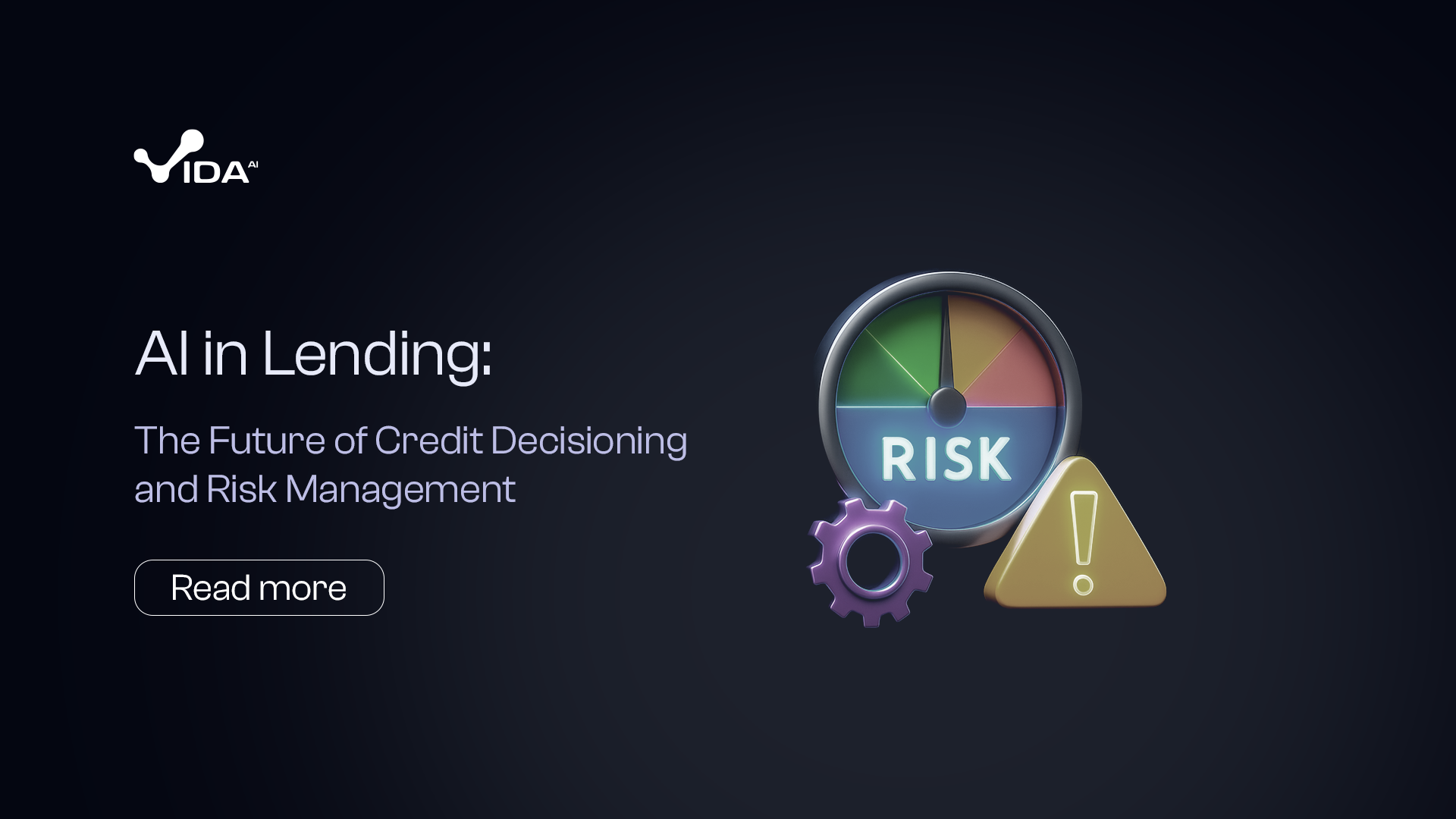back to Articles
AI in Lending: The Future of Credit Decisioning and Risk Management

Eniayewu Josephine
Content Writer
The lending industry stands at an inflection point where artificial intelligence transforms every aspect of credit decisioning and risk management. Traditional approaches that served banks for decades now struggle with modern borrower complexity, economic volatility, and regulatory requirements. AI-powered systems deliver unprecedented accuracy in risk assessment while dramatically improving operational efficiency and customer experience.
The Evolution of Lending Technology
Lending technology has progressed through distinct phases, each addressing specific industry limitations. Manual underwriting dominated for centuries, relying entirely on human judgment and limited data sources. Credit scoring systems introduced statistical modeling but remained constrained by rigid parameters and historical data dependency.
Digital transformation brought online applications and automated workflows, yet decision-making logic remained fundamentally unchanged. AI represents the next evolutionary leap, introducing dynamic learning capabilities that continuously improve accuracy while processing vastly more complex data relationships.
Modern AI systems analyze patterns invisible to traditional approaches, identifying subtle indicators that predict borrower behavior with remarkable precision. These capabilities transform lending from reactive portfolio management to proactive risk optimization.
Comprehensive AI Applications in Credit Decisioning
Machine learning algorithms process multidimensional data arrays that encompass traditional credit metrics, alternative data sources, and real-time behavioral indicators. Bank transaction analysis reveals spending patterns, income stability, and financial management capabilities that static credit reports cannot capture.
Social media analytics, when properly anonymized and regulated, provide insights into lifestyle consistency with stated income and employment. Device fingerprinting detects potential fraud through unusual access patterns, while natural language processing analyzes application text for misrepresentation indicators.
Ensemble modeling combines multiple AI approaches to maximize accuracy. Decision trees handle categorical variables effectively, while neural networks excel at detecting complex non-linear relationships. Random forests provide robust predictions across diverse borrower profiles, and gradient boosting optimizes rare event prediction like defaults.
Advanced Risk Management Through AI
Traditional risk management relies on periodic portfolio reviews and static risk models that lag behind changing conditions. AI-powered systems monitor portfolio health continuously, identifying emerging risk patterns before they impact performance significantly.
Predictive analytics forecast default probability changes based on economic indicators, borrower behavior shifts, and seasonal patterns. Early warning systems alert portfolio managers to accounts requiring attention, enabling proactive intervention that prevents losses.
Dynamic pricing models adjust interest rates based on real-time risk assessments rather than static categories. This precision pricing optimizes profitability while maintaining competitive rates for low-risk borrowers, creating win-win scenarios that drive market share growth.
Stress testing capabilities simulate portfolio performance under various economic scenarios, enabling proactive capital planning and regulatory compliance. AI models incorporate complex variable interactions that traditional stress tests miss, providing more accurate risk projections.
Quantifiable Business Impact
Organizations implementing comprehensive AI lending solutions report dramatic performance improvements across key metrics. Default rates typically decrease 25-35% as machine learning identifies risk indicators missed by traditional scoring methods.
Approval rates for qualified borrowers increase 20-30% as AI recognizes creditworthy applicants excluded by narrow traditional criteria. This expansion captures significant market opportunities while maintaining portfolio quality through superior risk assessment.
Processing times shrink from days to minutes, enabling instant decisions that improve customer experience and competitive positioning. Same-day funding capabilities become achievable at scale, meeting modern consumer expectations for immediate service.
Operational cost reductions reach 50-60% through automated decision-making that eliminates manual underwriting for most applications. Staff productivity increases as human expertise focuses on complex cases requiring nuanced judgment rather than routine processing.
Implementation Strategies for Maximum Impact
Successful AI implementation requires strategic planning that addresses data preparation, model development, regulatory compliance, and organizational change management. Begin with comprehensive data audits to identify quality issues and integration opportunities.
Pilot programs targeting specific products or customer segments allow controlled testing and refinement before full deployment. Shadow scoring runs AI models parallel to existing systems without affecting decisions, building confidence while generating validation data.
Regulatory compliance frameworks must address explainability requirements, bias prevention, and fair lending obligations. Develop clear documentation standards, audit trails, and governance processes that satisfy regulatory scrutiny while maintaining competitive advantages.
Change management programs ensure successful organizational adoption. Train staff on AI capabilities and limitations, establish clear roles for human oversight, and create escalation procedures for complex situations requiring manual intervention.
Overcoming Implementation Challenges
Data quality issues represent the most common implementation obstacle. Inconsistent formatting, incomplete records, and outdated information reduce model accuracy significantly. Invest in data governance programs that establish quality standards and maintenance procedures.
Integration complexity increases with existing system diversity and technical debt. Plan for extensive API development, data transformation requirements, and legacy system modifications. Consider cloud-based AI platforms that simplify integration challenges.
The Future Landscape of AI-Powered Lending
Emerging technologies promise even greater advances in lending capabilities. Real-time income verification through open banking APIs eliminates documentation fraud while providing current financial snapshots for more accurate decisioning.
Blockchain-based credit histories create tamper-proof records that follow borrowers across institutions, reducing information asymmetries and improving risk assessment accuracy. Smart contracts enable automated lending with predetermined terms and conditions.
Quantum computing may eventually enable analysis of exponentially larger datasets with complex variable interactions currently impossible to process. While still emerging, these capabilities could revolutionize risk modeling and portfolio optimization.
Strategic Competitive Advantages
Early adopters of comprehensive AI lending platforms gain compounding competitive advantages that become increasingly difficult for competitors to match. Superior risk assessment enables more accurate pricing strategies that maximize profitability while maintaining market competitiveness.
Faster processing capabilities capture market share in time-sensitive lending situations. Borrowers increasingly expect instant decisions, and organizations providing immediate responses consistently outperform slower competitors.
AI in lending represents more than technological advancement, it fundamentally transforms how financial institutions assess risk, make decisions, and serve customers. Organizations embracing these capabilities position themselves for sustained success in an increasingly sophisticated and competitive marketplace.
Sign Up Now to unlock faster credit decisions, smarter risk management, and better borrower insights with AI-driven lending.

